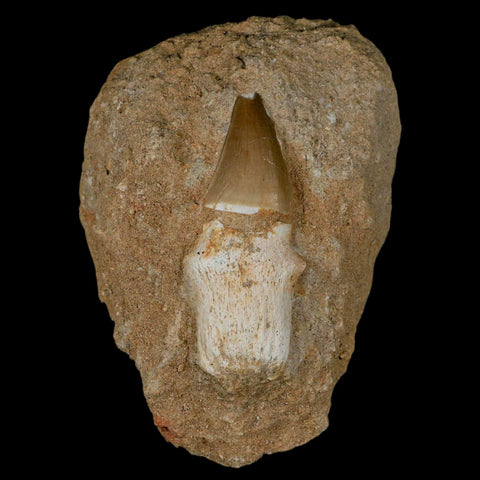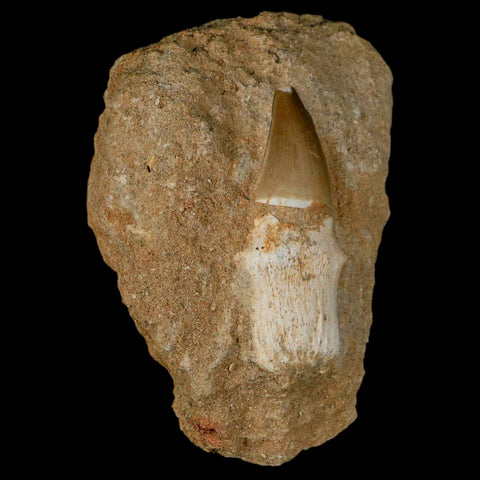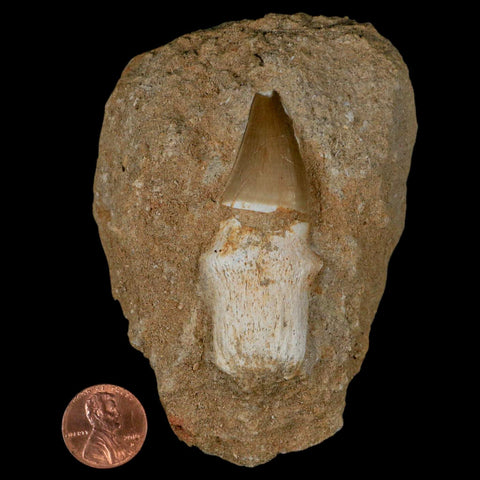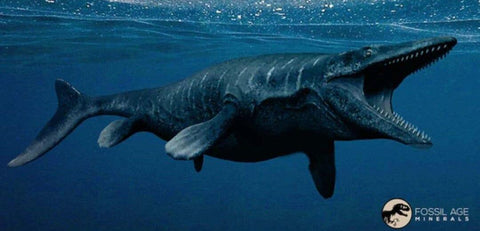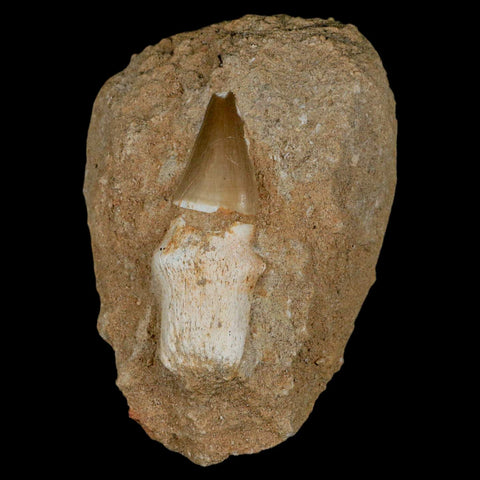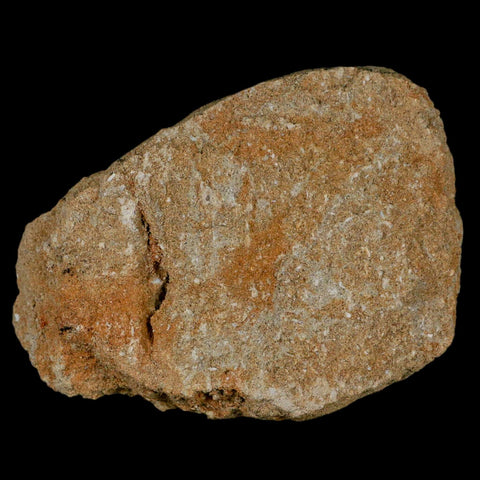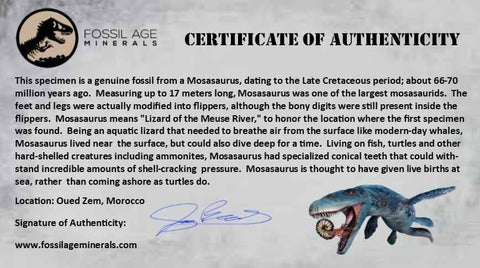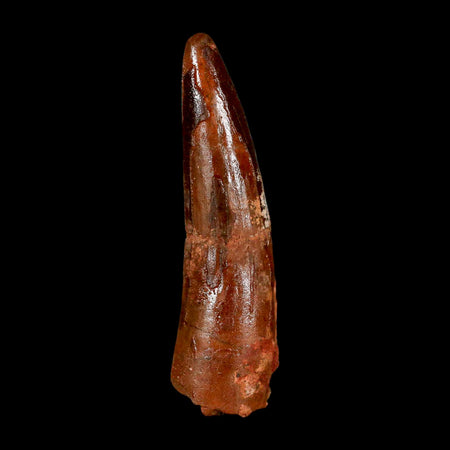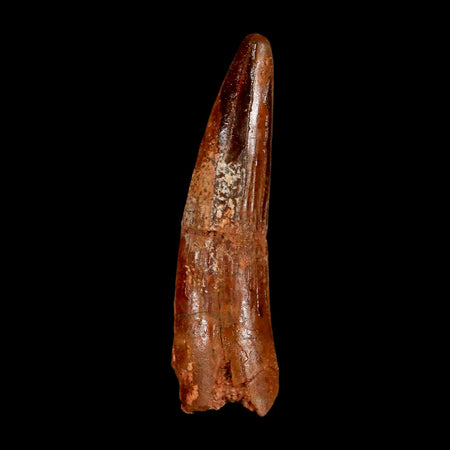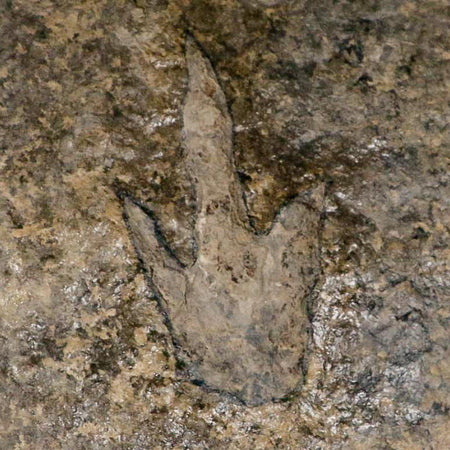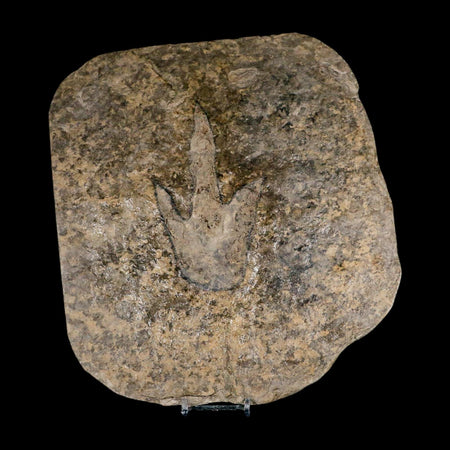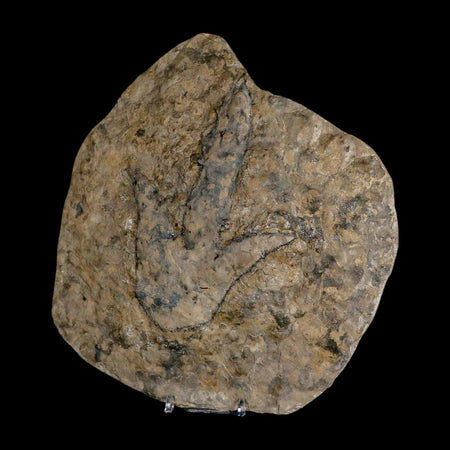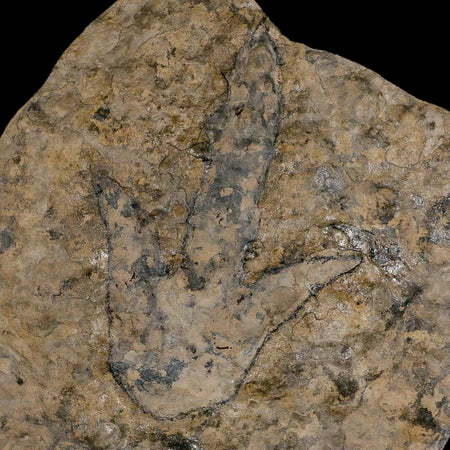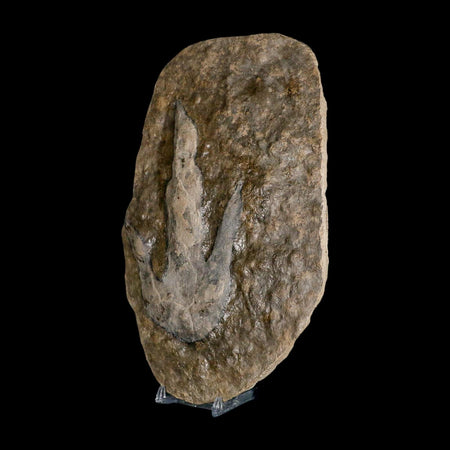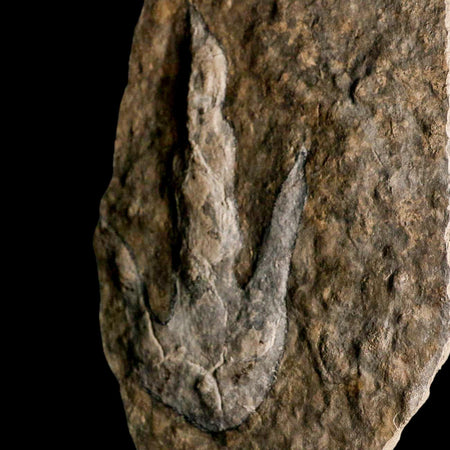2.4" Mosasaur Prognathodon Fossil Tooth Rooted In Matrix Cretaceous Dinosaur Era
Location: Oued Zem, Morocco
Weight: 8.1 Ounces
Dimensions: 3.8 Inches Long, 2.7 Inches Wide, 1.5 Inches Thick (Matrix)
Tooth Dimensions: 2.4 Inches Long, 1 Inch Wide
Comes with a Certificate of Authenticity.
The item pictured is the one you will receive.
This is a genuine fossil.
100 - 66 Million Years old, Upper Cretaceous, Maastrichtian Epoch.
Name: Prognathodon (Forejaw tooth).
Named By: Dollo - 1889.
Diet: Carnivore.
Size: Depending upon the species, Prognathodon could range between 6 to possibly just under 14 meters in length.
Known locations: Fossil locations suggest a worldwide distribution, but are especially well-known from Europe and North America.
Time period: Campanian to Maastrichtian of the Cretaceous.
Prognathodon was a late Mosasaur that showed a trend towards a different kind of predation that saw it living like the much earlier basal placodont reptiles of the Triassic, such as Placodus. This means that Prognathodon specialized in eating tough-shelled prey items like shellfish, ammonites, and turtles. The diet of Prognathodon was, for a long time, just speculation based upon the teeth and jaw construction, but two discoveries in Canada in the early years of the twenty-first century not only revealed the full body shape of Prognathodon but the diet as well. One specimen revealed the presence of turtle and ammonite fossils located where its stomach would have been. Interestingly, it also had a one-hundred and sixty centimeters long fish in its gut, suggesting that while Prognathodon was a specialized predator, it was also opportunistic in its feeding.
Prognathodon possessed a sturdy, heavy jaw capable of generating significant bite force through its powerful jaw muscles. Of particular significance are its teeth, which not only exhibit considerable strength and are well-adapted for crushing but also display serrations visible under close examination. This dual specialization allowed the teeth to effectively break through the hard protective shells of prey while simultaneously slicing their internal flesh. Additionally, Prognathodon featured bony rings surrounding the eye sockets, an adaptation believed to enhance eye resilience against the increased pressure of deep-water environments—a necessary trait for frequent dives targeting ammonites.
The reason Prognathodon adopted this distinct diet remains unclear, especially since mosasaurs are typically seen as top predators of reptiles and fish. It's possible that intense competition for the apex predator role forced Prognathodon to survive by shifting to a different food source, avoiding rivalry with others. Declining numbers of large prey might have also made changing its diet necessary. Alternatively, it may have simply taken advantage of a plentiful food supply. What’s certain is that Prognathodon wasn’t alone—another mosasaur, Globidens, also developed large, rounded crushing teeth to thrive on a similar diet.

Please be aware of the nature of fossils:
Being buried under the ground for millions of years under tons of pressure tends to be rough. No fossil comes out of the ground whole and perfect. Most fossils have undergone some restoration, while others are altered by man simply to enhance their presentation in different ways. The workers in Morocco do a very professional job of unearthing and preserving these natural treasures; however, commonly, natural cracks are visible on the surface. These are part of the natural beauty of the fossil and are not considered defects.


